an artist with something to say (source: Wyllieum)
So, the good news is that Scottish artist George Wyllie (1921-2012) had lots more to say in relation to the Stone of Destiny than I had previously recognised (see first project blog). I am grateful to the artist’s daughter, Louise Wyllie, co-author of Arrivals and Sailings: The Making of George Wyllie for most of the information that follows, and for generously allowing images to be reproduced here.
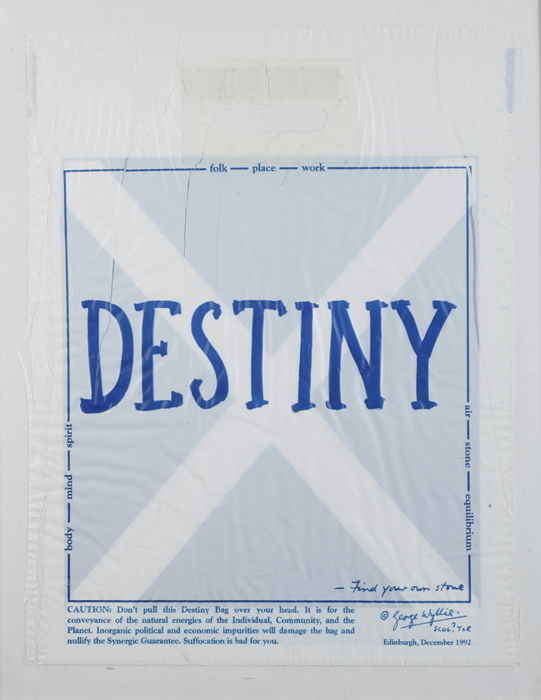
Wyllie asked the actor Sir Sean Connery, a famed supporter of the Scottish National Party, to pay £500 for the plastic bags to be produced, apparently 5000 of them.
Destiny bag. (c) George Wyllie Estate
More research is needed to establish the dates and some of these works, but we can start with the DESTINY bags, dated Edinburgh, December 1992. The the context for the production was the Scotland Demands Democracy march, attended by around 30,000 people on 12 December 1992. This was organised to coincide with the European Council Summit taking place in Edinburgh (Scotland on Sunday, ‘Summit Diary’, 13 December 1992). The frame of the bag reads: ‘body – mind – spirit / folk – place – work / air – stone – equilibrium’, while in the centre DESTINY is stamped over the Scottish saltire, followed by ‘- find your own stone’. Below we are told ‘CAUTION: Don’t pull this Destiny Bag over your head. It is for the conveyance of the natural energies of the Individual, Community, and the Planet. Inorganic political and economic impurities will damage the bag and nullify the Synergic Guarantee. Suffocation is bad for you.’
There are clever allusions here to what it means to find wellness in a personal and political sense, through taking ownership of what is yours, with the Stone of Destiny as a metaphor that would have been recognisable to all those who marched for democracy. Specifically, there’s a reference here in ‘folk work place’ to the ideas promoted by Patrick Geddes, the inspirational late nineteenth-century / early twentieth-century intellectual and activist. In Geddes’ world, movement and synergy needs to be added to the mix of folk, work and place to enable human co-operation, qualities also imbricated in Wyllie’s thinking and practice. (There’s a Wyllie notebook on display in the current exhibition space at the Wyellium (visited 6 July 2024) opened at ‘Synergezetics simply explained’ that captures this link in his work; see Macdonald 2000 for more on Geddes.) Wyllie’s DESTINY bag inspired Democracy for Scotland to organise later Destiny Marches that converged on their 24-hour vigil for a Scottish Parliament (Aberdeen Press and Journal, ‘Destiny March’, 25 March 1996).
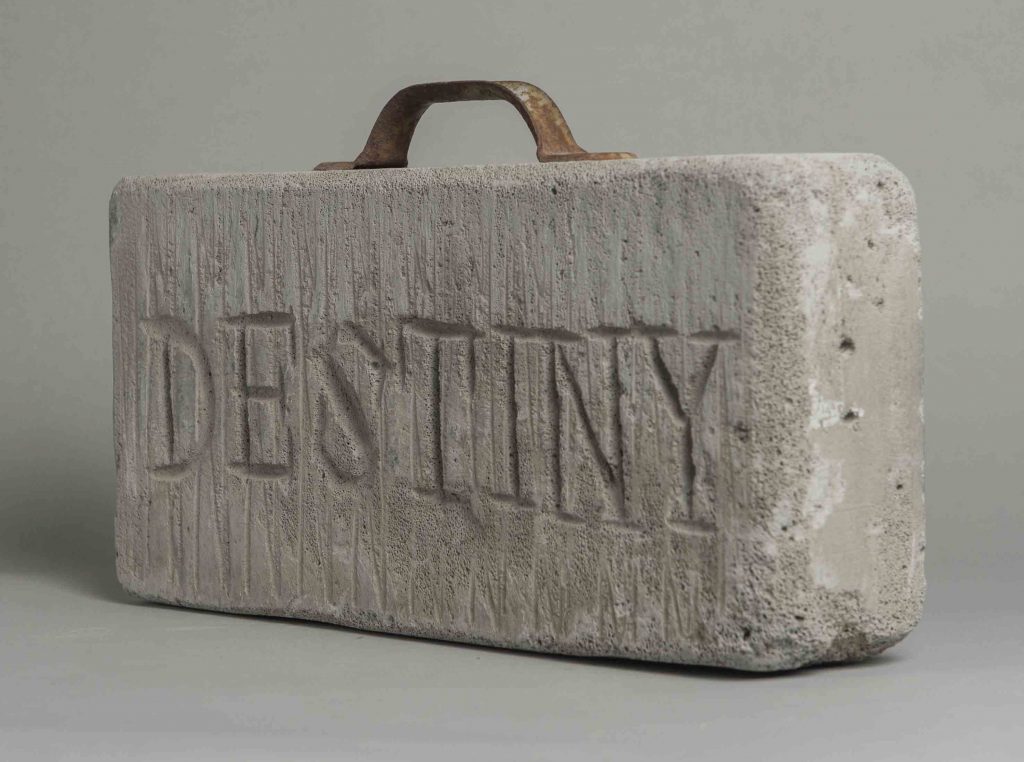
The Stone of Destiny from The Stirling Smith Art Gallery and Museum. (c) George Wyllie Estate
When Wyllie created his concrete and aluminium ‘The Stone of Destiny’ (above), the context was still the desire for a Scottish Parliament (achieved in 1997 after the 1996 referendum). At Stirling University, we borrowed Stirling Smith Art Gallery & Museum’s ‘The Stone of Destiny’ for our ‘The Stone of Destiny – a moving story’ exhibition. At that time we did not know how many Wyllie had produced and wondered whether anyone else acquired their own stone, as Wyllie intended (see earlier blog)?
Those questions begin to be answered. The closing scene in the Barbara and Murray Grigor film The Why?s Man, made in 1990, shows a pile of at least seven such DESTINY stones, several broken. There is a related depiction of Wyllie sat among six DESTINY stones in an Andrew Morris photograph on page xii of Pat Gerber’s 1992 The Search for the Stone of Destiny. In the film, we’ve just seen George and his wife Daphne standing at an imaginary Goods to Declare desk, their luggage including one of these sculptures, the viewer being warned how, come the last count, ‘the penalties for evasion [of moral financial and social compass] are severe’. (If I understand correctly.) An extra feature on the VIZ Ltd DVD talks to Wyllie, perhaps in a workspace, where there is another style of portable concrete block inscribed with the word ‘Destiny’. If George Wyllie left ‘a legacy of questions’ (Wyllie et al. 2012, 56), there are many we could dearly ask him, about how he was using ‘Destiny’ and what it meant to him. This is not specifically addressed in any of the publications about Wyllie of which I am yet aware. While the DESTINY stones feature in newspaper coverage related to Wyllie and his work (eg Scotland on Sunday, ‘The ?enius of George’, 5 May 1991), they are not explained here either. It is also not clear whether he produced the group as a one-off exercise or produced further examples over time.
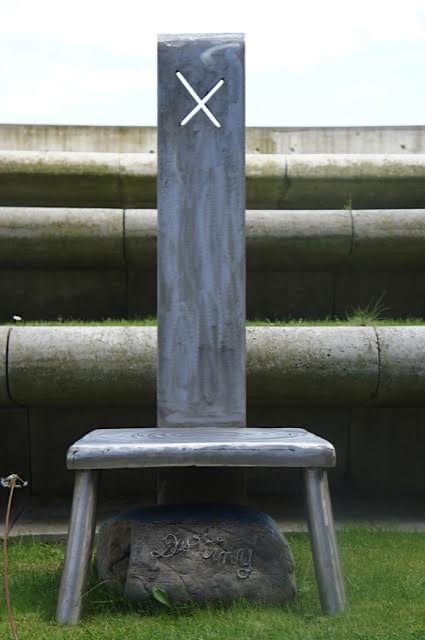
Wyllie’s ‘Contemplace’ belongs to the time when he began working in stainless steel and making more contemporary work. The precise date is presently unclear, but it was photographed in 1998 (Scotland on Sunday, 17 May 1998), exhibited at Hill House in Helensburgh (solo exhibition here in 2007: Wyllie and Patience 2016, 168) and his Mitchell Library retrospective in 2012 (Wyllie et al. 2012, 108), before being sold to the Scottish Parliament art collection (see below, author photos taken on 21 June 2024, on the public steps up to the Debating Chamber). There is clearly an allusion to Charles Rennie Macintosh’s distinctive high-back chairs.
Contemplace. (c) George Wyllie Estate
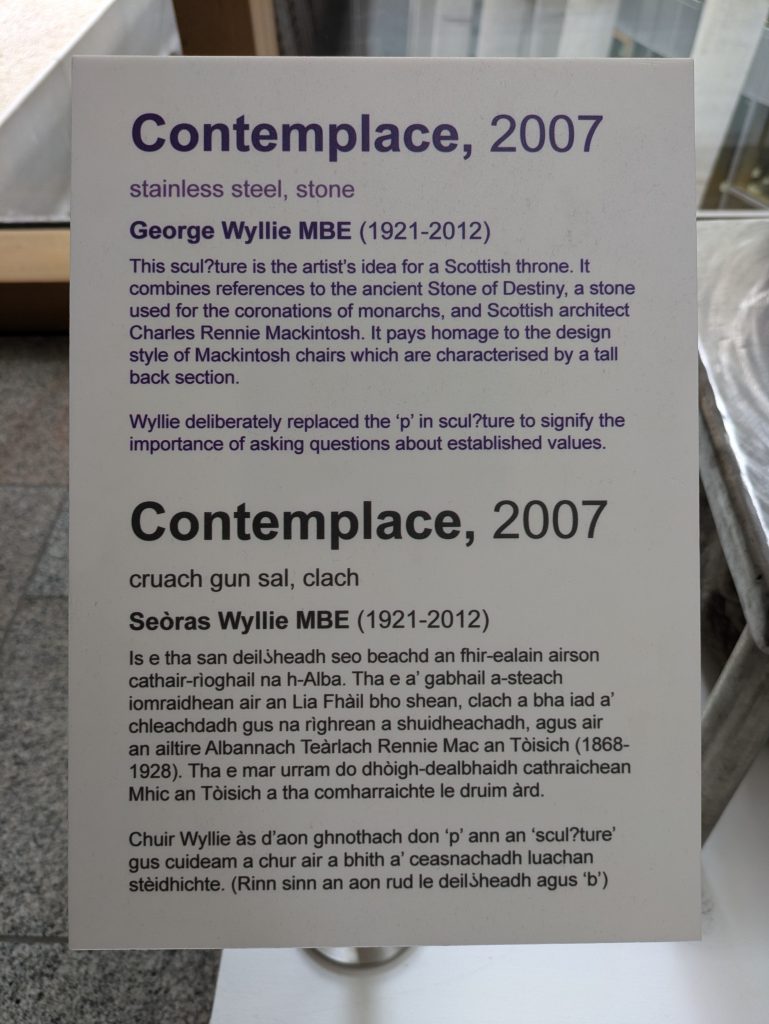
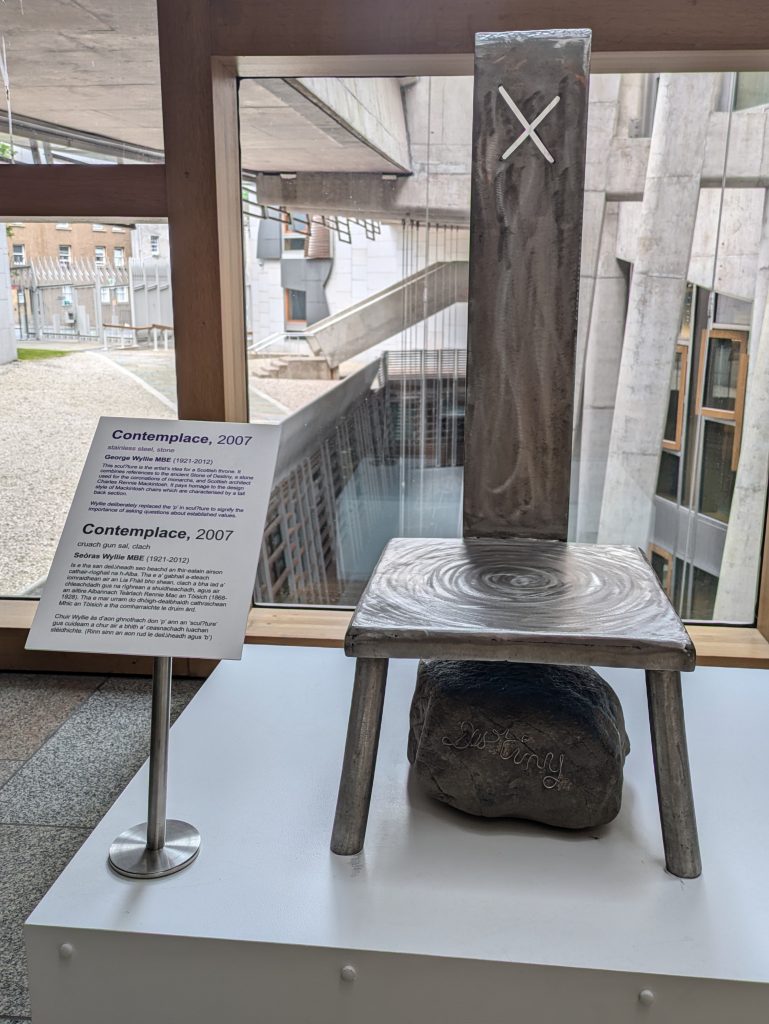
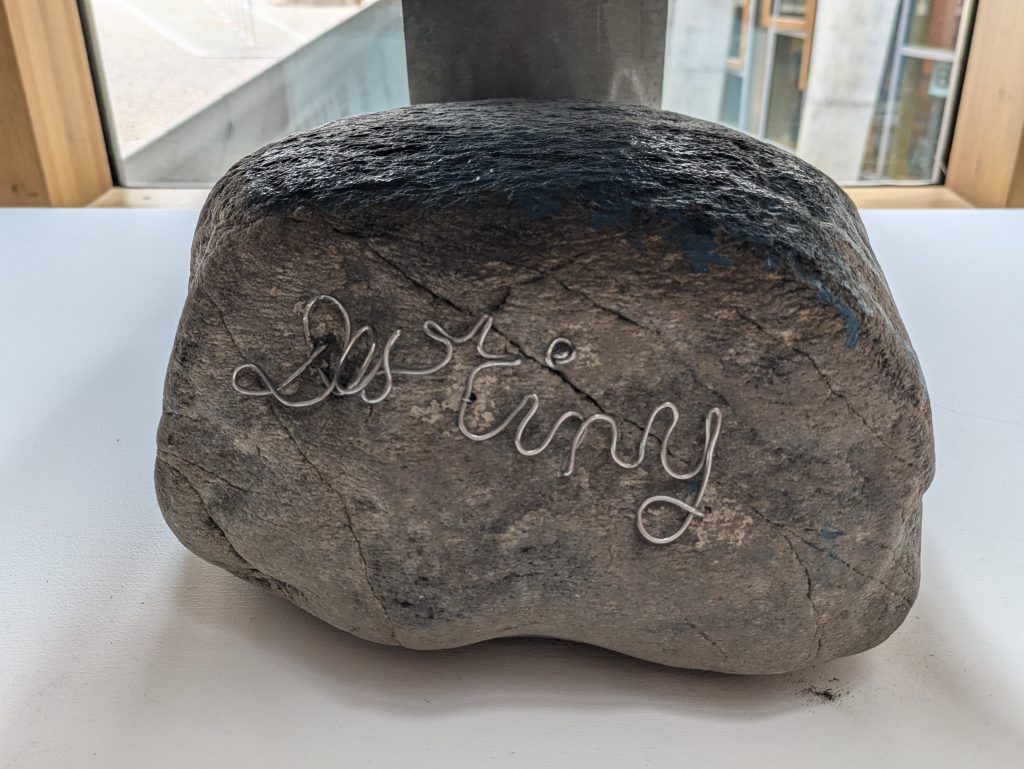
Likely about the same time, Wyllie produced a garden stool that clearly resembles the Stone and a ‘roughshod mat out of a piece of throw-away lead roofing material’ from which he cut out DESTINY (pers comm. Louise Wyllie; see below).
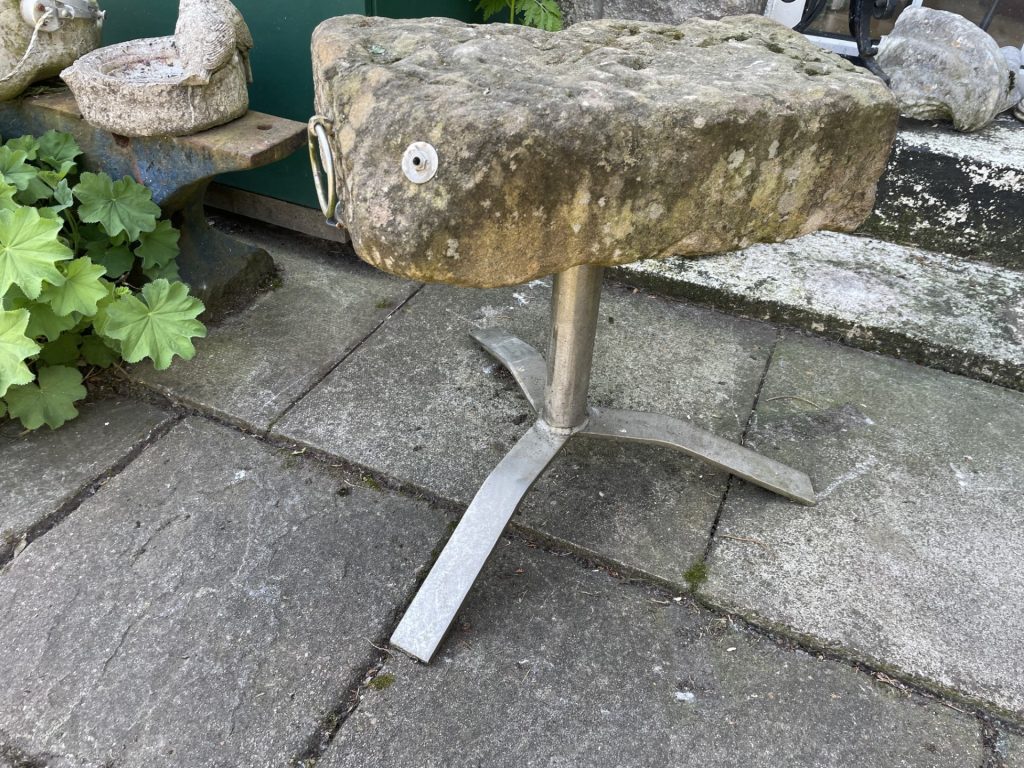
Wyllie’s garden chair
It is a charming piece of work … I think it had a spire or headphones that plugged in at some point (Louise Wyllie)
Title unknown. (c) George Wyllie Estate
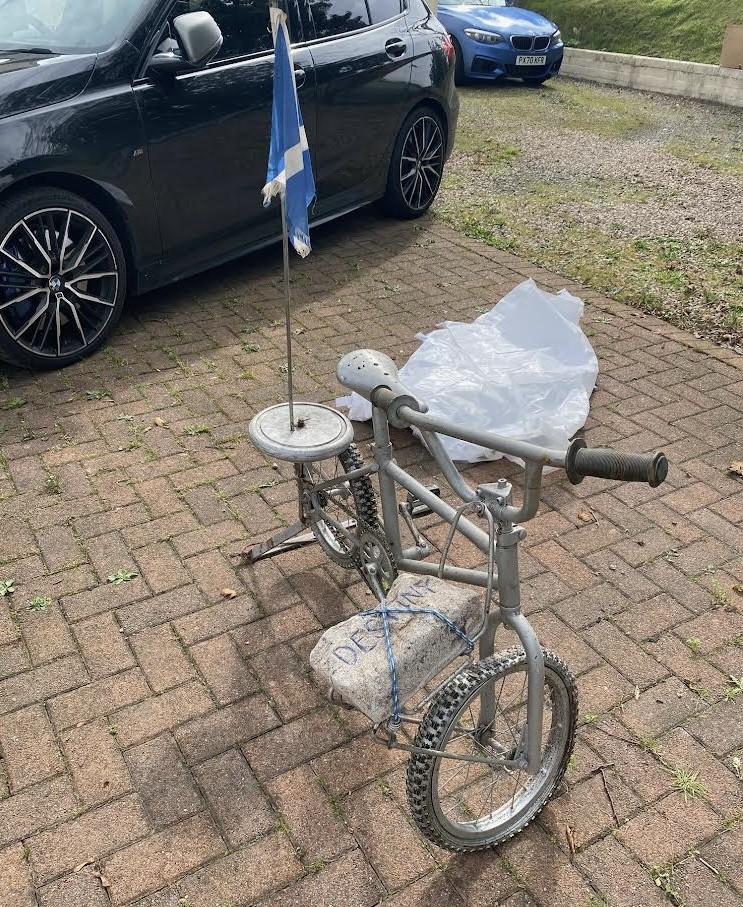
Finally, the George Wyllie Foundation has been donated a rather wonderful moving sculpture – a silver-sprayed child’s bike that carries a Destiny stone at the front and waves a Scottish flag at the back as you pedal it. This was previously owned by the Irvine Arts Centre, before being passed to private hands. Is it speaking to promising young futures?
Title unknown. (c) George Wyllie Estate
We can all now learn about and celebrate Wyllie and his work. On 28 March, a new art gallery opened in Greenock that is dedicated to this highly imaginative and thought-provoking artist – The Wyllieum. And I’m told there will be Destiny doormat fridge magnets to purchase, as well as bags …
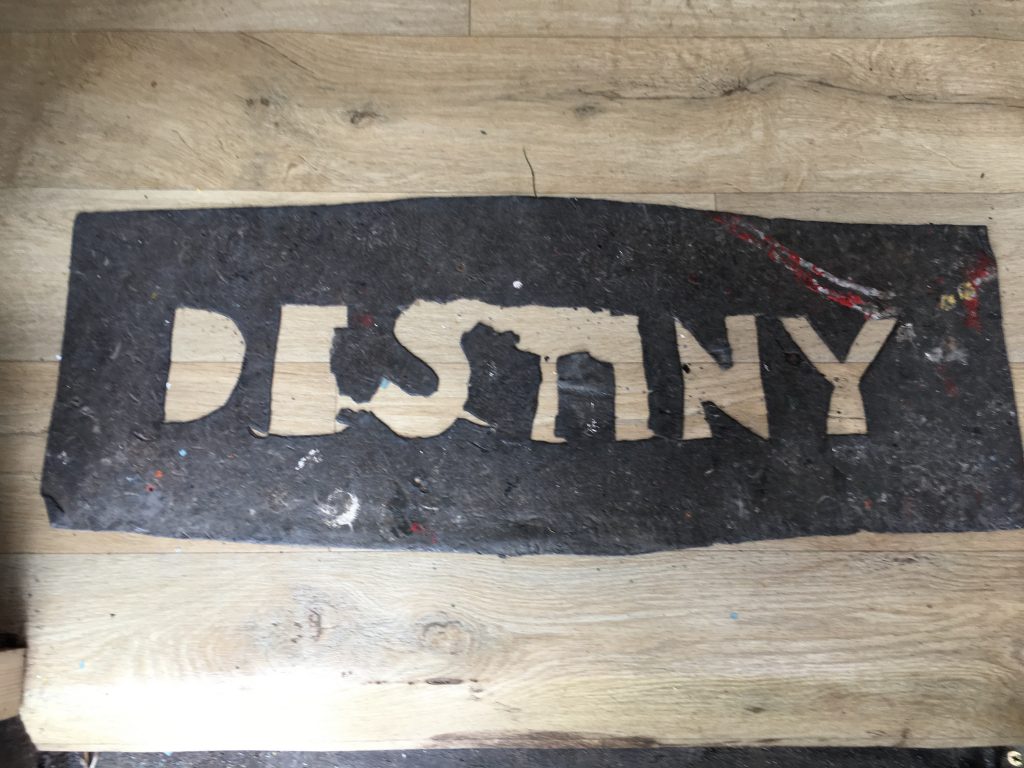
George Wyllie stepped on this mat for years, every time that he entered his workshop.
Title unknown. (c) George Wyllie Estate
Further reading about George Wyllie
GRIGOR, B. and GRIGOR, W., 1990. The Why?s Man. In Pursuit of the Question Mark with George Wyllie and Bill Paterson. VIZ Ltd.
The Wyllieum https://www.wyllieum.com/ (last consulted 13 June 2024)
MACDONALD, M., 2020. Patrick Geddes’s Intellectual Origins. Edinburgh, Scotland: Edinburgh Univerity Press.
WYLLIE, L., MACKENZIE, M. and PATIENCE, J., eds, 2012. In Pursuit of the Question Mark. George Wyllie. A Retrospective. 1965-2012. Irvine: The Whysman Festival.
WYLLIE, L. and PATIENCE, J., 2016. Arrivals and Sailings: The Making of George Wyllie. Edinburgh: Polygon.

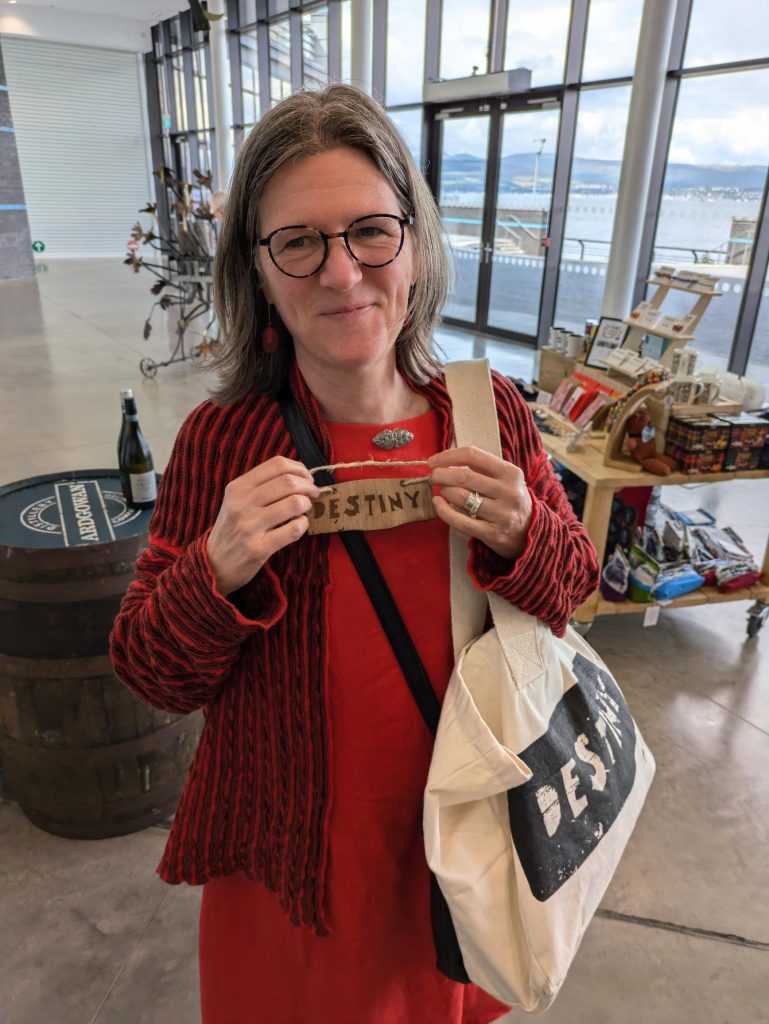
Original text of 13 June 2024 expanded after visit to the Wyllieum on 6 July 2024. I do love my bag!! Further updated on 5 January 2025 after newspaper sources helped to pin down further details about the DESTINY bags and (concrete) stones.
Queries or further information: Professor Sally Foster.
Full project website: https:\\thestone.stir.ac.uk.
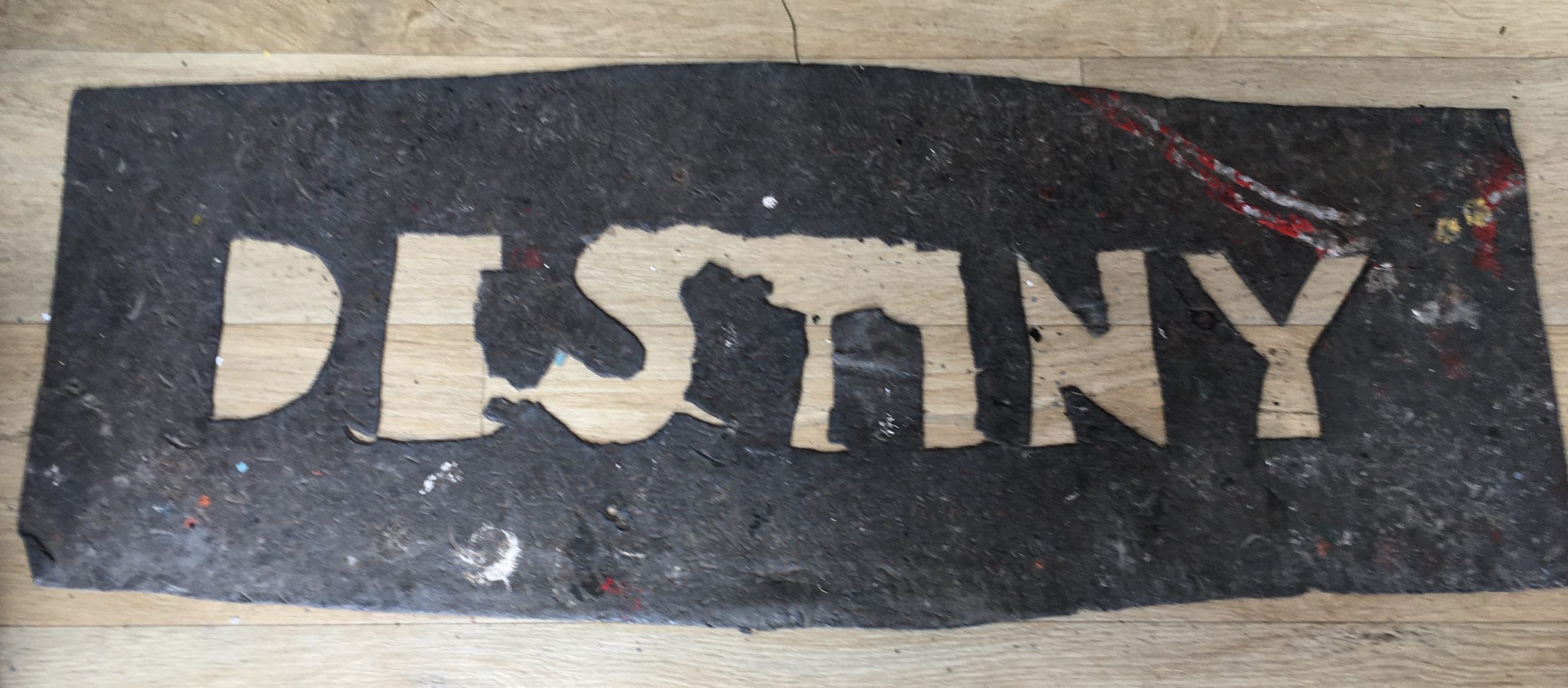
Had no idea of Wyllie’s other Destiny Children; hope they can be brought together one day at the new Wyllie centre.